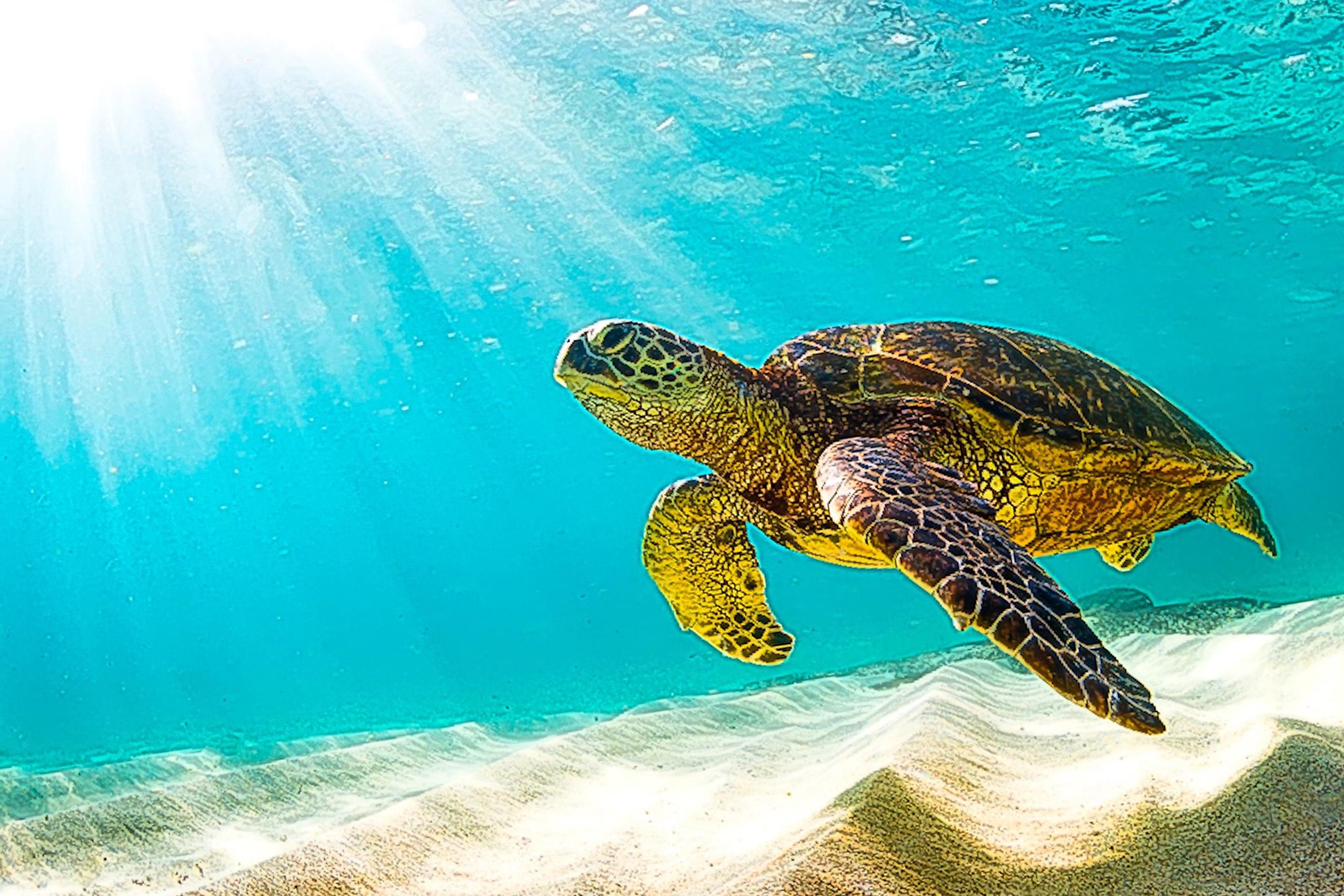
Are Turtles Amphibians?
With their patient movements, colorful cutaneous patterns, and characteristic protective shells, turtles occupy a curious niche within the animal kingdom. But what taxonomic class do they belong to? On the one hand, their semi-aquatic nature might suggest they are amphibians, but on the other hand (or flipper), their skin resembles that of reptiles, and like other reptilians, they are often seen basking in the sun. Even though these two classes of tetrapods do share some traits (and a common ancestor), this particular shelled creature belongs to the second camp. Turtles are not amphibians; they are reptiles.
Scientific Classification of Turtles
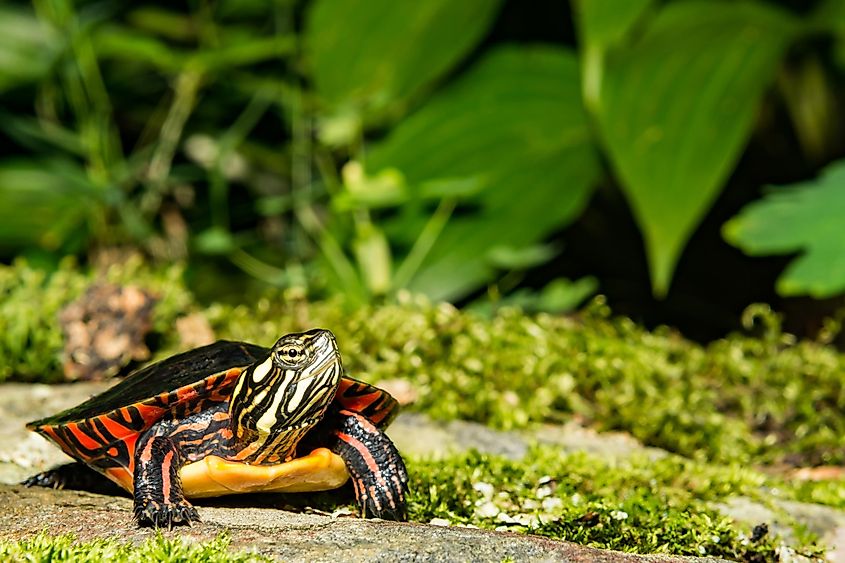
- Kingdom: Animalia
- Phylum: Chordata
- Superclass: Tetrapoda
- Class: Reptilia
- Order: Testudines
- Suborder: Pleurodira or Cryptodira
Note: Due to the differing orientation of vertebrae, some turtles are able to retract their heads inside their shell (Cryptodira), whereas other species retract their head to the side (Pleurodira).
Further classification depends on the family of turtle/tortoise/terrapin in question. In total, there are 357 known species. Unfortunately, due to habitat loss and degradation, water and plastic pollution, and climate change, 171 of those are classified as threatened or endangered. In fact, turtles are considered to be the most vulnerable vertebrates after primates.
What Are Reptiles?
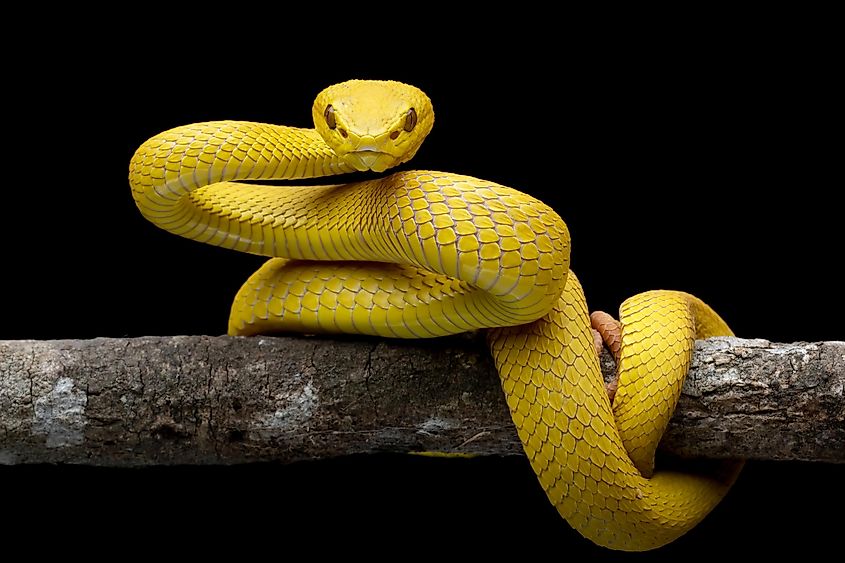
Reptiles are cold-blooded creatures with dry, scaly skin. They lay amniotic eggs on land (which means no larval phase), and even though some species may spend large amounts of time in the water, reptiles breathe using lungs for their entire lives. Interestingly, all reptiles are considered tetrapods because they share common ancestry with a four limbed animal. Even though snake morphology has diverged over the ages, they still share this demonstrable lineage. Some snakes even maintain vestigial hints of their ancient limbs.
Turtles, whether of the terrestrial or aquatic variety, are classified as reptiles because they have four legs and scales covering their bodies, they possess an ectothermic metabolism, they physically mate with one another, and they breathe through lungs (just as crocodiles, snakes, and lizards do). With that said, turtles are an undeniably unique variety of reptile. For starters, they have hard shells. Yes, alligators and crocodiles have armor-like scales, but no other reptiles possesses such a distinctive carapace. Turtles have also evolved modified limbs that act like flippers in the water, or in the case of desert tortoises (one of the many animals that live underground), can be used to dig out burrows. And finally, turtles/tortoises are capable of living exceptionally long lives. In fact, the oldest living land animal is a Seychelles giant tortoise named Jonathan, who as of 2024 is estimated to be 191 years old.
What Are Amphibians?
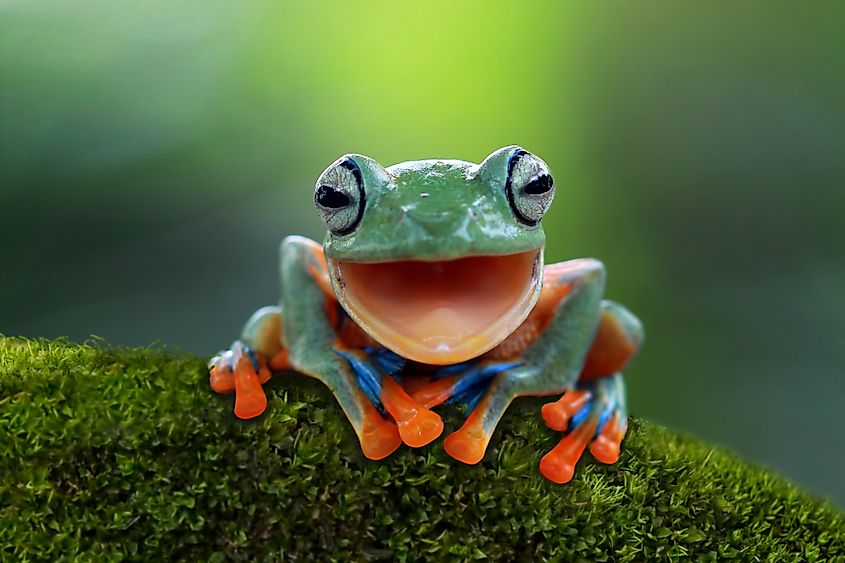
Amphibians are also descended from a 400-million-year-old, four-limbed common ancestor. They are believed to have delineated from their distant reptile cousins approximately 300 million years ago. But while both reptiles and amphibians bear the designation of tetrapod, the latter's limbs tend to be more precisely developed (with the exception of the serpent-like caecilians).
Unlike reptiles, amphibians have moist, mucous-covered, permeable skin, which they use to breathe (i.e. cutaneous respiration) in conjunction with lungs. The method of respiration depends on the phase of life and physical situation (i.e. the aquatic-dominant larval phase versus the terrestrial/semi-aquatic adult stage). Typically, amphibians lay their eggs in water and males will fertilize them separately, rather than engage in sex (though some species do partake in sex-mimicking behaviors). Juveniles then go through a larval state (when only gills are used for breathing), before morphing into adults (i.e. when the lungs form). Even though both amphibians and reptiles are herpetofauna (i.e. cold-blooded), the former do not sunbathe like the latter because it would dry out their skin. Instead, they rely on water to regulate their temperature via the exchange of gasses.
There are three clades of amphibians: frogs (Anura), salamanders (Urodela), and caecilians (Apoda). Turtles are not classified as amphibians because of their water impermeable skin, exclusive reliance on lungs (like other reptiles, they can hold their breath for lengthy periods) and their life cycle/lack of metamorphosis (females bury their eggs on land, and once hatched, baby turtles are immediately able to make a dash for the water).
What's the Difference Between Turtles and Tortoises?
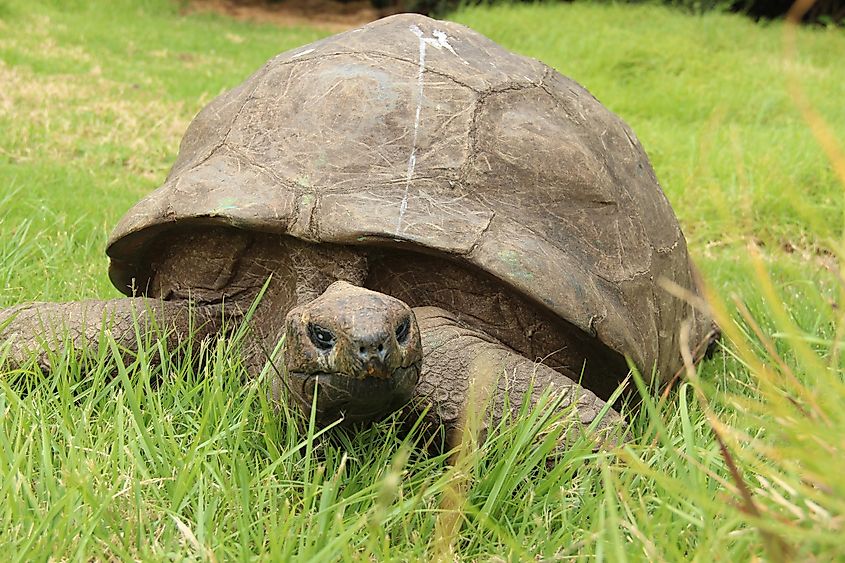
The terms turtle and tortoise are often used interchangeably in casual conversation. In fact, there are three general types of shelled reptiles: turtles, tortoises, and terrapins. The main distinguishing factor is the environment in which they live. Turtles like the ocean, tortoises prefer dry land, and terrapins gravitate to small bodies of freshwater (ex. ponds, lakes, and reservoirs), and the peripheral terrain. With that said, North American authorities do not tend to distinguish turtles from terrapins.
Since tortoises do not need to worry about streamlined swimming, they tend to have more rounded shells and stubbier, sturdier limbs (compared to the slick flippers of their marine brethren). Generally speaking, tortoises are also larger than both turtles and terrapins.
Because of their distinct terrestrial adaptations, tortoises are easier to differentiate from amphibians compared to turtles. For instance, they are distributed across hot, arid environments of North America, Mediterranean Europe, and Asia. While certain amphibians have found a niche within some deserts, none would be able to shadow the habits of say, the desert tortoise, like they might be able to around a pond with the likes of the painted turtle.
Final Thoughts
Turtles are a special breed of reptile. Of course, one should be forgiven for accidentally lumping them in with amphibians such as frogs and salamanders, but technically, they do belong to the same lineage as snakes and crocodiles. The reason we know that turtles are not amphibians (beyond the basic rules of taxonomy), is because they have scales, warm themselves in the sun, engage in sexual reproduction, lay eggs on land, breathe exclusively through lungs, and bypass the metamorphosis that juvenile amphibians experience. Regardless of the semantics, turtles are peaceful and valuable creatures that face a tough road ahead. Nearly half of the known species throughout the world are in trouble and need our help to rebound. Thankfully, ocean cleanup initiatives, ecotourism-friendly hatcheries, and many other pertinent environmental projects are geared toward conserving these troubled testudines.











